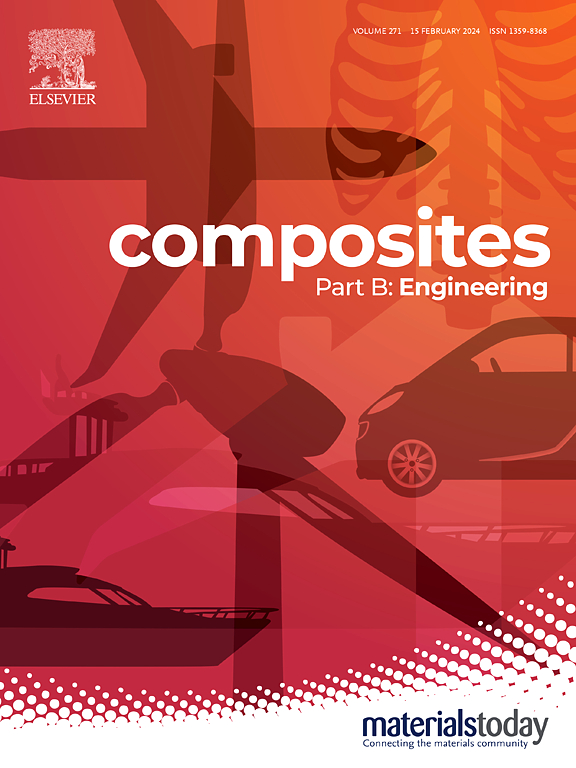Boosting the interlaminar toughening capacity of PBO microfiber for carbon fiber laminates through the interface regulation of interleaving layer
IF 12.7
1区 材料科学
Q1 ENGINEERING, MULTIDISCIPLINARY
引用次数: 0
Abstract
Poor interfacial properties limit the toughening effect of the high-performance poly(p-phenylene benzobisoxazole) (PBO) microfiber for the carbon fiber laminate. Herein, a rigid-flexible transition interface was developed on the PBO fiber surface to enhance its interfacial adhesion and improve the interlaminar toughening effect for carbon fiber laminates. The rigid-flexible structure also provides a smooth modulus gradient for the interfacial load transfer to effectively utilize the excellent mechanical properties of the PBO fiber and dissipate more fracture energy. This allows the Mode I failure mode to change from stick-slip failure to stable crack propagation by triggering the toughening mechanism of fiber debonding and bridging, crack deflection, and sub-crack evolution. The value increases from 238.3 to 496.5 J m−2. In addition, the Mode II interlaminar fracture changes from interfacial failure to cohesive failure, dissipating additional energy through fracture behavior such as buffer layer damage, crack deflection, and sub-crack development. Accordingly, the value increases from 1509.7 to 3336.2 J m−2. The interfacial regulation strategy developed for the PBO fiber opens a new avenue for the interlaminar toughening of the carbon fiber laminate using smooth and inert organic fibers.

求助全文
约1分钟内获得全文
求助全文
来源期刊

Composites Part B: Engineering
工程技术-材料科学:复合
CiteScore
24.40
自引率
11.50%
发文量
784
审稿时长
21 days
期刊介绍:
Composites Part B: Engineering is a journal that publishes impactful research of high quality on composite materials. This research is supported by fundamental mechanics and materials science and engineering approaches. The targeted research can cover a wide range of length scales, ranging from nano to micro and meso, and even to the full product and structure level. The journal specifically focuses on engineering applications that involve high performance composites. These applications can range from low volume and high cost to high volume and low cost composite development.
The main goal of the journal is to provide a platform for the prompt publication of original and high quality research. The emphasis is on design, development, modeling, validation, and manufacturing of engineering details and concepts. The journal welcomes both basic research papers and proposals for review articles. Authors are encouraged to address challenges across various application areas. These areas include, but are not limited to, aerospace, automotive, and other surface transportation. The journal also covers energy-related applications, with a focus on renewable energy. Other application areas include infrastructure, off-shore and maritime projects, health care technology, and recreational products.
 求助内容:
求助内容: 应助结果提醒方式:
应助结果提醒方式:


